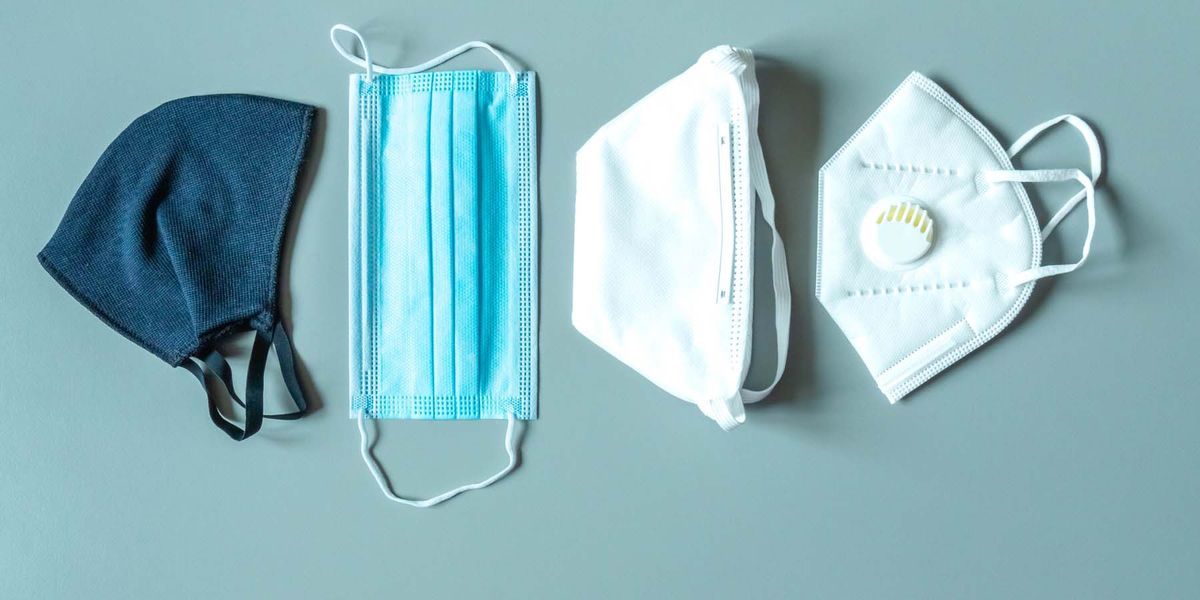Given the ongoing pandemic, face masks against COVID-19 have emerged as a crucial tool in preventing the spread of infectious diseases. Masks are an important tool for preventing respiratory droplets from spreading between people, which can help reduce viral illness transmission. The effects of face masks have been studied extensively, and their importance cannot be overstated.
Governments and health organisations worldwide have recommended or mandated the use of face masks since the outbreak of COVID-19 in late 2019 to help prevent the spread of the virus. It has resulted in a significant increase in global mask production, distribution, and use.
A recent study at St George’s Hospital in South West London, published in November 2022, provided new insights into the effects of face masks in controlling COVID-19 spread in hospital settings.
Table of Contents
Importance of Face Masks Against COVID
By creating a physical barrier that prevents respiratory droplets from being released into the air, masks can significantly reduce the risk of transmitting and acquiring COVID-19. The effects of face masks play a crucial role in preventing the spread of respiratory viruses by:
1. Blocking Respiratory Droplets
Face masks against COVID act as a physical barrier, reducing respiratory droplets infected people expel into the air when they cough, sneeze, talk, or breathe. By doing so, masks can help to limit the spread of respiratory viruses and protect others from potential infection. A recent study in Nature Medicine suggests that surgical face masks can effectively block virus-containing respiratory droplets. The study found that wearing masks reduced the detection of coronavirus RNA in aerosols and seasonal coronaviruses in respiratory droplets, indicating the effects of face masks in reducing the spread of respiratory viruses.
2. Reducing Droplet Exposure
Face masks against COVID keep the wearer from inhaling respiratory droplets containing viruses, lowering the risk of infection. A recent study at the University of California, Davis, demonstrated the effects of masks in protecting wearers from virus-laden respiratory droplets. The study found that wearing a mask reduced the number of inhaled droplets by over 90%, indicating that masks can effectively reduce the risk of respiratory virus transmission. Understanding the effects of face masks is crucial for following public health guidelines and contributing to the global effort to control and reduce the spread of respiratory viruses.
3. Reducing Viral Transmission
The widespread use of masks in public places can help reduce overall viral transmission by limiting the spread of droplets from both symptomatic and asymptomatic individuals. According to a modelling study published in Health Affairs, states in the United States with mask mandates had a greater decrease in daily COVID-19 growth rates than states without mask mandates, indicating that widespread use of masks can contribute to reducing viral transmission at the community level.
It is important to acknowledge that the effects of face masks can vary based on several factors, including the type of mask, the fit of the mask, and adherence to mask-wearing guidelines. Masks work best with other preventive measures such as hand hygiene, social distancing, and vaccination.
Covid Face Masks Didn’t Work as They Were Expected To, Study Finds
The research conducted at St. George’s Hospital in South West London compared infection rates from December 2021 to June 2022, when all patients and staff were required to wear face masks, and June to September 2022, when the mask policy was relaxed. When assessing the rate of COVID-19 spread in hospital wards, the researchers considered levels of outside community transmission.
The study found that wearing masks did not control COVID-19 spread in the hospital setting. According to site surveys, removing mandatory face coverings did not affect viral transmission. After controlling for levels of community transmission outside the hospital, the researchers discovered no difference in the rate of COVID-19 spread onwards when masks were required versus when the policy was relaxed.
While the study provides new insights, it is critical to consider the larger context, including other research and public health recommendations, when assessing the effects of face masks in preventing the spread of respiratory viruses such as COVID-19.
Examples of Respiratory Viruses and Strategies for Prevention
When someone speaks, coughs, or sneezes, respiratory droplets are produced that can spread respiratory viruses very quickly. People nearby the infected person can become infected by these droplets as they move through the air.
Respiratory viruses that can be spread via respiratory droplets include:
1. Influenza
Also known as the flu, this virus spreads through respiratory droplets. Getting an annual flu shot, practising good hand hygiene, and avoiding close contact with infected people are all preventative measures.
2. Respiratory Syncytial Virus (RSV)
This virus causes respiratory infections in young children, elders, and those with weakened immune systems. To avoid RSV, practise good hand hygiene, avoid close contact with infected people, and disinfect surfaces and objects regularly.
3. Rhinovirus
Rhinovirus is the most prevalent cause of the common cold. Practising good hand hygiene, avoiding close contact with infected individuals, and disinfecting surfaces prevent the spread of rhinovirus, as with other respiratory viruses.
4. Parainfluenza Viruses
These viruses can cause respiratory infections in young children, such as croup. Preventive measures such as regular hand washing, avoiding close contact with infected individuals, and cleaning frequently touched surfaces can help reduce the transmission of infectious diseases.
5. Human metapneumovirus (hMPV)
This virus causes respiratory infections in people of all ages, with the most severe cases occurring in infants, elders, and those with compromised immune systems. To avoid hMPV, practise good hand hygiene, avoid close contact with infected people, and disinfect frequently touched surfaces.
6. Norovirus
This highly contagious virus can cause gastroenteritis, a condition characterised by symptoms such as vomiting and diarrhoea. Although it is not a respiratory virus, it can be spread through contact with contaminated surfaces, objects, or food. To avoid norovirus infections, practise good hand hygiene, regularly disinfect surfaces, and handle food safely by washing fruits and vegetables, thoroughly cooking seafood, and avoiding cross-contamination in the kitchen.
Other Strategies for Preventing Virus Spread
Aside from the well-known strategies of wearing masks and avoiding close contact with infected individuals, several other measures can aid in the prevention of respiratory virus transmission:
1. Hand Hygiene
It is essential to practise good hand hygiene to stop the spread of infectious diseases. Hands must be washed frequently and thoroughly for at least 20 seconds using water and soap. If soap and water are not easily accessible, it is advised to use an alcohol-based hand sanitiser with at least 60% alcohol. Avoiding touching your face is also a good idea because the eyes, nose, and mouth are common places for viruses to enter the body.
2. Social Distancing
Maintaining a safe distance from others (at least 6 feet or 2 metres) helps prevent infection, particularly in crowded areas or during an active outbreak. Respiratory viruses can spread via droplets produced when an infected person coughs or sneezes, so adhering to public health guidelines is critical to preventing their spread.
3. Respiratory Etiquette
To stop the spread of virus-containing droplets when coughing or sneezing, Use a tissue or the crook of your elbow to shield your mouth and nose from the air. After using a tissue, properly and immediately dispose of it. Then, to prevent the spread of germs even further, wash your hands with soap and water or use hand sanitiser. This simple practise can help to reduce the spread of respiratory viruses.
4. Regular Disinfection
Regularly clean and disinfect frequently touched surfaces like doorknobs, light switches, countertops, and electronic devices. It reduces the risk of infection from respiratory virus-infected surfaces.
5. Adequate Ventilation
Open windows or use air purifiers to ensure proper air circulation in indoor spaces. Good ventilation can help reduce virus particle concentrations in the air, lowering the risk of transmission.
6. COVID-19 Vaccination
Vaccinating against COVID-19 is critical in limiting the disease’s spread and severity. Vaccines protect the individual who receives them and contributes to herd immunity, which can slow or stop the spread of the virus. Follow the advice of public health officials regarding vaccine eligibility, booster shots, and the best vaccine for your age and health.
Despite ongoing debates and varying study results regarding the effects of face masks in preventing COVID-19 transmission, individuals must comply with public health guidelines to prevent the transmission of respiratory viruses like COVID-19. It includes practising good hand hygiene, maintaining social distance, getting vaccinated, and wearing face masks when public health officials recommend it.
Individuals who follow these guidelines, including understanding the effects of face masks, can help the global effort to control and reduce the spread of respiratory viruses, protect vulnerable populations, and reduce the burden on healthcare systems.

